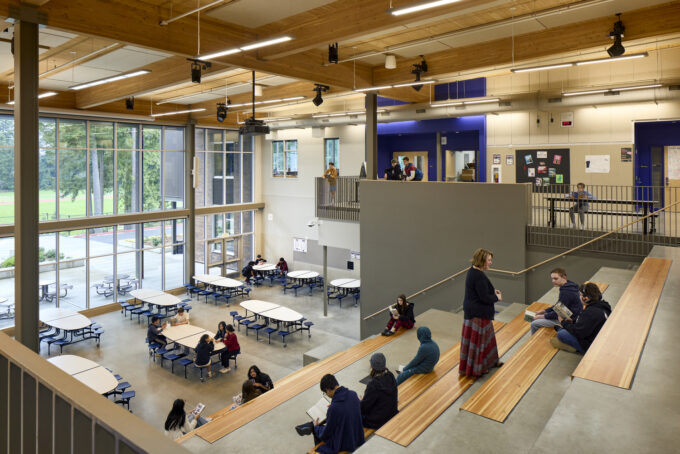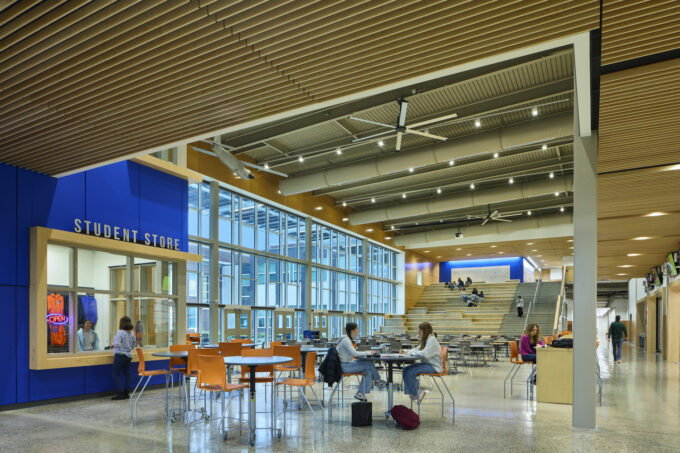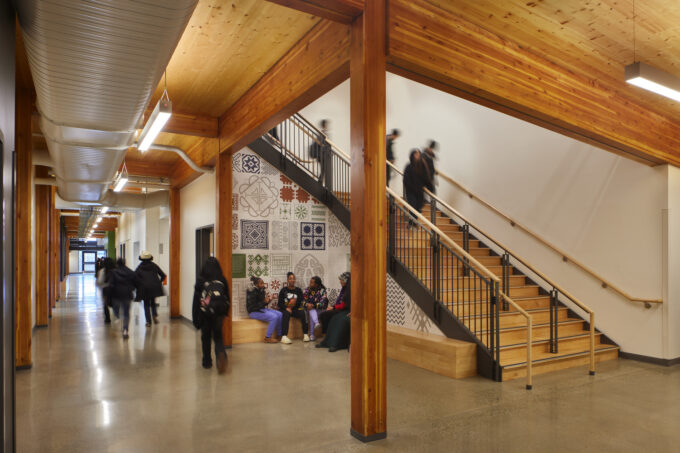Welcome to Five in Focus, HMC Architects’ blog series spotlighting the trends, ideas, and innovations shaping the future of architecture and design. Each edition features insights from our design leaders as they share what inspires them and how it informs their work.
In this installment, HMC’s PreK-12 Practice Leader Brian Meyers reflects on the momentum sparked by HMC’s recent acquisition of Bassetti Architects. He shares what this partnership means for the future of our PreK-12 practice—and how Bassetti’s deep expertise in learning environments strengthens our collective ability to serve students, educators, and communities. United by a shared purpose and our Design for Good ethos, this collaboration represents more than growth—it’s a synergy of values, vision, and design excellence that will amplify our positive impact for generations to come.
1. Major Upside for the PreK-12 Practice
I have been especially excited about what Bassetti’s joining us means for the PreK-12 Practice. At HMC, we have developed unique expertise in designing and constructing projects that address the complexities of the California State School Building Program and all its governing agencies. The expansion to the Pacific Northwest will allow us to broaden our portfolio in delivering exceptional learning environments throughout the West Coast.
I look forward to learning how projects are completed in the Pacific Northwest—there is a lot to learn both ways, as every state has unique regulatory and funding landscapes that must be carefully navigated.
If you haven’t already, I encourage you to check out the Bassetti portfolio online. The work is inspiring, the spaces are contemporary with warmth and human-scaled quality, and, like HMC, Bassetti has an impressive roster of school district clients, many of which are longstanding relationships.

Photo by: Moris Moreno

Photo by: Benjamin Benschneider
2. Enhancing our Planning Expertise
Leveraging the talented leaders in Portland and Seattle, HMC gains significant experience in educational planning. Their work starts with all students in mind, leading to the creation of vibrant learning environments. Their expertise has been fostered over the years through a deep commitment to being lifelong learners. I have always admired the work of Lorne McConachie, FAIA and Principal Emeritus. He is an icon in the field of educational planning, guiding this next generation of Bassetti leaders to do exceptional work.
Additionally, they are committed and engaged in the A4LE organization, taking on leadership roles in both Oregon and Washington. We are adding two ALEP-accredited professionals, Dena Eaton-Colles and Lydia Dominy Burns, to our firm. They bring a strong understanding of how educational goals, pedagogy, and facility design intersect to support student learning and community needs.
3. Trauma-Informed Design: A Significant Publication
For the past several years, the Bassetti team has been working on a comprehensive research project focused on trauma-informed design (TID). The team has presented the topic at the National AIA Convention and National A4LE and has received significant accolades for the work. We are finalizing a combined effort to publish the fifth version of the TID workbook, providing an in-depth series of discussions and strategies that address practices, observations, and research where an understanding of trauma can be incorporated into the design of places where we live, work, learn, and play—to provide spaces for people to feel safe, comfortable, and engaged.
TID encompasses a set of complex and interrelated issues with far-reaching societal implications. The insights in the TID book touch every aspect of how we practice architecture, in PreK-12 and across all of the HMC practice areas. I am excited about the impending book release and look forward to conversations with clients, peers, and thought leaders on how understanding TID can and will shape how we design.
4. Bringing Sustainable Mass Timber Expertise to California
Bassetti Architects is a leader in sustainable architectural design, with a strong emphasis on mass timber construction, particularly in educational facilities across the Pacific Northwest. Mass timber is so important in today’s construction, as it is a more sustainable way to build, with a significantly lower carbon footprint than steel or concrete. With modern forestry techniques, wood has become a renewable resource that, when engineered, offers the strength and durability necessary for the types of multi-story structures we routinely design.
The prevailing thinking in our industry is that mass timber construction is the way of the future, with increasingly ambitious projects worldwide utilizing timber—and Bassetti’s expertise will help us get up to speed in this important area.
Bassetti’s commitment to sustainability extends beyond material choices. Like HMC, signatories of the AIA 2030 Commitment, their design approach includes setting energy performance targets, utilizing renewable energy sources, and focusing on indoor environmental quality. Their expertise in historic restoration projects is another piece of sustainable design, which also reflects the high value placed on cultural heritage.

photo by: Benjamin Benschneider
5. Alignment of Our Cultures
With the addition of the 60-strong Bassetti team, we are adding a staff of talented, like-minded, and fun employee-owners to expand our Design for Good ethos. As I have visited the teams in Seattle and Portland, I am so impressed by the people, the work, and the culture.
Having everyone together on Catalina Island last month for HMC’s 85th Anniversary celebration was another step in integrating our two teams. It was great to meet more of our new colleagues in person. I had many inspiring conversations that confirmed what we already knew—HMC and Bassetti is an ideal union that offers major upside both immediately and into the future! Our combined companies are very much “United in Purpose.”

